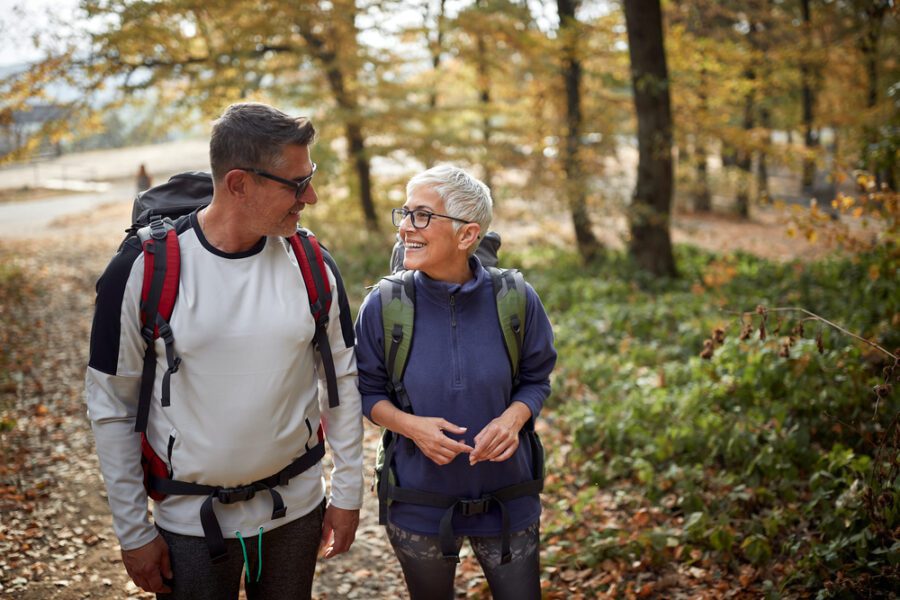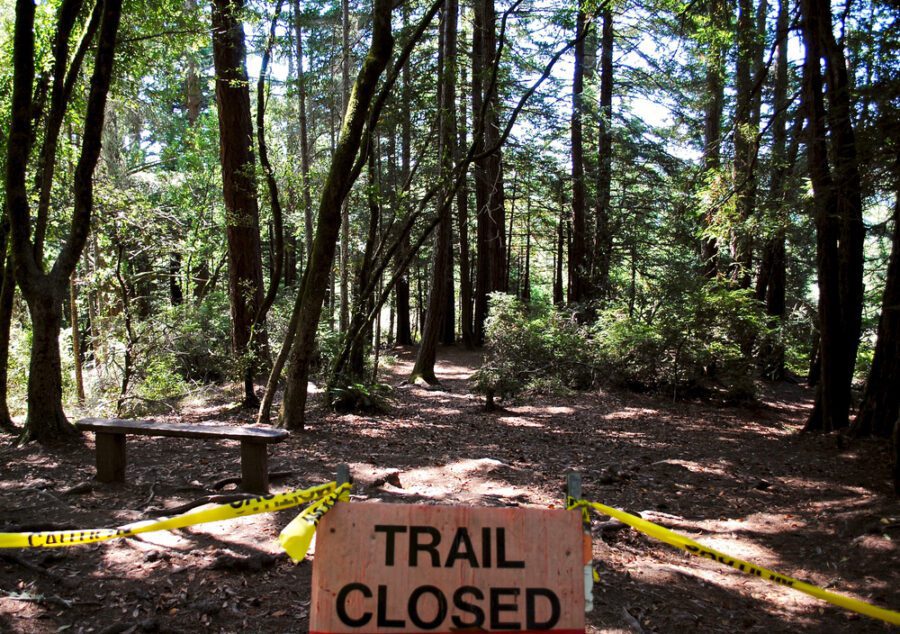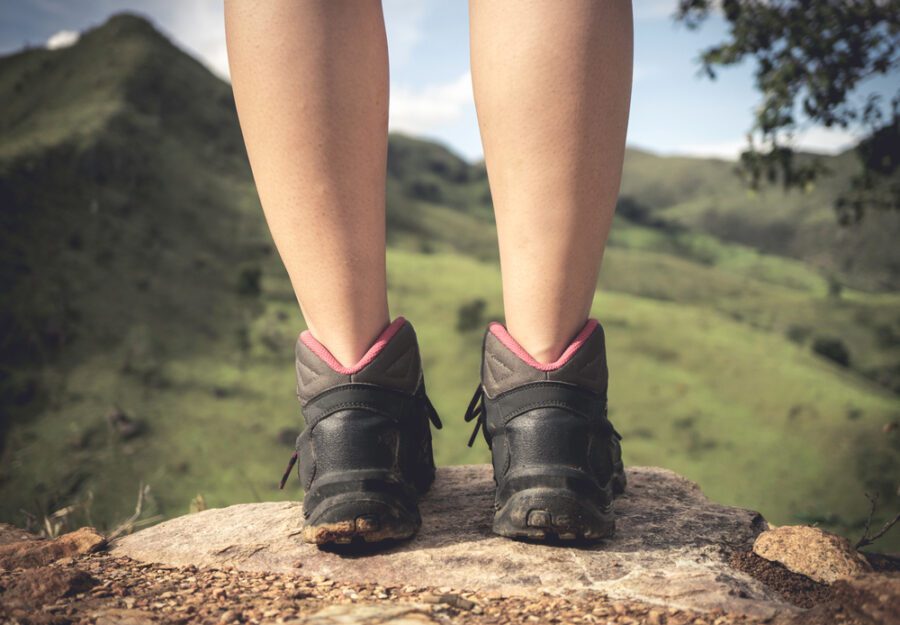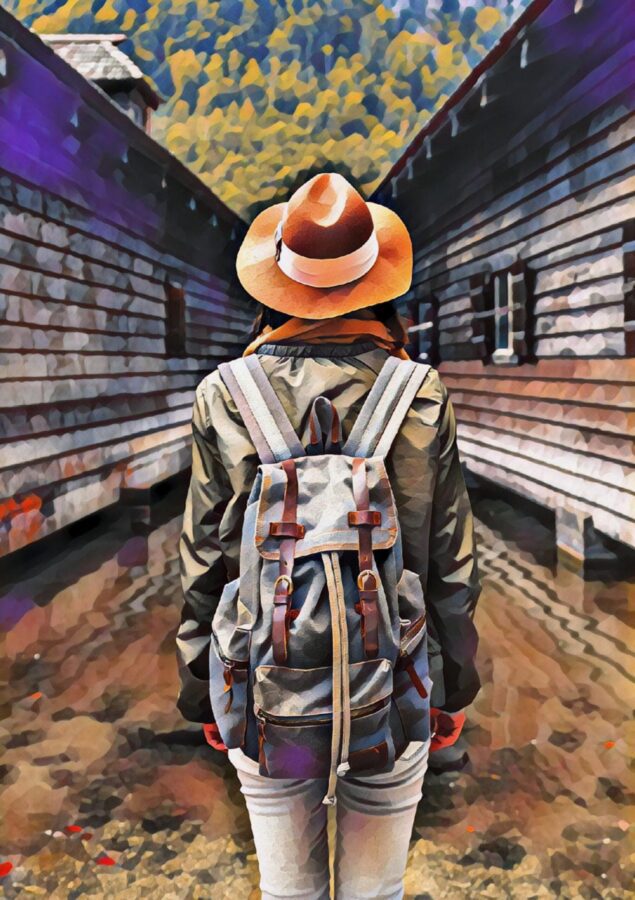Hiking is one of the most relaxing and beneficial things for your body and mind. There’s nothing more pleasant than walking on astonishing trails, observing nature as it is, being in complete peace and far away from the rude and loud city. That’s the good life.
However, even though it may seem like an easy walk there are some things you should know before embarking on a nice and well-deserved hike. Like with any trip there are some tips and facts you should be aware of and be prepared in advance and have a small imaginary checklist.

1. Why don’t you bring some friends or family members along?
Activities are more fun when your loved ones are present as well. However, it’s also safer to be with more people on a hike. Besides that, if one gets hurt, the others can help them and the chances of encountering wildlife are smaller when traveling with a group, animals tend to stay away from them.
The ideal number would be a total of 4, larger groups tend to be louder and disturb other hikers. However, if you feel like going alone that’s great too, this experience can have a bigger impact if you live it just on your own.
2. Make sure you do good research
It’s for the best if you do some detailed research about the trail you plan to hike on. It’s not enough to find it on Facebook and think ”Oh that seems nice”.
Because remember: pictures don’t always capture the whole story and details of the place you’re headed to. And so it’s best to search it on Google or ask some opinions about it on specialized groups. It’s better to know the following aspects: how far is it, how difficult is it, and how safe it is.
If you are not prepared for a certain hiking trail, but you don’t look it up first you may find yourself in an unpleasant situation.
3. Time is the essence and so make sure you have enough of it
If you choose a rather long trail to hike on, make sure you have time to finish it before it gets dark. It can be very dangerous to hike during the night. You can easily get injured or even animals can represent a danger in the dark, and we’re sure you don’t want that.
Follow these steps: find out how much time it takes to hike it, how much time it takes for you to drive there, and at around what time it gets dark outside.

4. Researching the conditions of the trail is important
As we mentioned before it’s safer to know what to expect in advance. You don’t want to find yourself in a situation where you hiked for two hours and then you are stopped by snow or other similar things.
You can check out groups on Facebook created for these topics and discussions, park websites, Instagram pages, or online forums. This way you can avoid getting lost, which can turn pretty problematic. The first rule when you go hiking is to never leave your trail and to be truthful we can understand why.
5. ALWAYS check the weather and the avalanche forecasts!
It’s one of the basic and first rules before you embark on this journey. Just imagine how bad it can get if you get caught in unexpected rain, snow or an AVALANCHE( these are the case if you hike in the winter) catches you unprepared.
You can end up severely injured, lost or worse. Check these even a few minutes before you get in your car, the weather can change very fast from being sunny or cloudy to raining. This also reminds us of the next important step: ALWAYS dress accordingly and appropriately for the weather conditions!
6. Your dress code should be appropriate for the weather
Check out the weather forecast as we mentioned in the previous point and then make sure you have the appropriate clothes with you as well. Just in case, bring along a warm jacket, waterproof or a raincoat. Avoid cotton because it soaks up moisture and instead dress in clothes made of polyester, nylon, or merino wool clothing.
It will also be a good idea to dress up in layers because you can take each piece off as the temperature changes. Don’t forget that weather can be very unpredictable and can change fast so be prepared!

7. Protect your feet
Make sure you have the right gear for hiking, that means hiking boots or trail runners that grip the trail. If it’s a long hike then you should consider that the risks are higher. Cut your nails before the big event and don’t wear wool socks they can make your foot uncomfortable or all hot and sweaty.
8. Try to not get lost
Bring a map, a compass, and a copy of the trail’s description. Also, a GPS is a good idea or copies on your phone. Oh and don’t forget to NEVER LEAVE YOUR TRACK! That’s how most people managed to get lost.
9. Bring SNACKS
Physical effort makes you hungry, no doubt about that and since you’re gonna spend some time until you find a restaurant or go back home, you will need lots of snacks.
Now you don’t need to pack a 5-course meal, but nutritive snacks which fit in your backpack are welcomed. In addition, you can leave some snacks in your car and you will gladly enjoy them at the end of the day.
Also, if you are with a group and someone happens to get injured while you wait for help, you can become hungry so it’s good to have extra snacks.
10. Also, don’t forget about a garbage bag
Nature is a very precious gift and we don’t need to pollute more than we already have so be a good and responsible citizen and bring a garbage bag with you.
DON’T DISCARD YOUR TRASH JUST ANYWHERE!!!

11. Don’t forget about water
Physical effort doesn’t just make you hungry it also makes you thirsty. And so because you’re gonna spend a good time on the hike it’s preferable to fill up a water bottle and pack it with the other things.
12. Make sure that you have these 10 things with you before leaving
These are essential things and should not be missed from your backpack: headlamp, first aid kit, sun protection, knife, communication device, fire starter, map or GPS, food and water, warm clothing, emergency shelter. Have a list that contains these items so you won’t miss any of them.
13. Is your hiking gear in good condition? You should check it
It’s vital that you check the equipment you plan to bring along on the trip. It would be unpleasant to arrive at the trail and notice some of it is broken or isn’t working properly. Make sure you know how to use the devices, if you bring any, like the GPS, check the first aid kit to make sure nothing is missing like band-aids or painkillers.
Don’t forget to check if everything is fully charged or has batteries that work. Also, check again that list we previously mentioned.
14. Make a trip plan and leave it at home
If anything goes wrong during your hiking trip and you get lost or injured and maybe your phone runs out of battery or you can’t get any signal, leave your trip plan at home. People will have a hunch of where to look for you and you will save a lot of time.
Also, consider letting some other close friends or relatives about your plans, giving them the date and time you’re supposed to be back, that way they’ll know something is wrong and will instantly come looking for you.
This is just a preventive method you don’t need to freak out or get cold feet about this, the experience is amazing and if you like the outdoors and nature you will embrace this as well.
For those who seek even more adventures, we have the perfect US locations!













